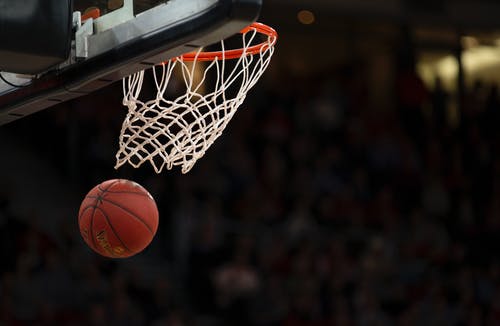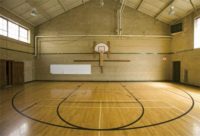
By EMMA DESIDERIO and BRIAN SCHMID

It’s been a year since the onset of the COVID-19 pandemic and high school athletes across New Jersey have had to deal with school many closures and re-openings of youth sports programs, protocols and restrictions that players, coaches, and families have to follow.
Young athletes had to adapt their game and mindset to the new situation under a pandemic. For some, the transition has been seamless. For others, it has taken a significant toll on their way of thinking.
Matt Desiderio, age 14, runs cross country and says that his experience is not what he was expecting. In order to cut down on contact, his high school is only allowing meets and nothing more.
“It kind of stinks,” said Desiderio, a freshman at Southern Regional High School. “I don’t know any high school sport experience other than this, and it’s not as fun as what I’ve heard.”
Youth Sports and the Pandemic: The Beginning
Back in the early stages of the COVID-19 pandemic in the Spring of 2020, there was a lot of uncertainty around the state of New Jersey. There was no guidebook, so every decision had to be made on the fly. One of these decisions by Governor Phil Murphy was to indefinitely suspend all in person school and sports that came along with that.
BREAKING: Gov. Phil Murphy just announced that New Jersey schools will remain closed through the end of the academic year, presumably canceling the high school spring sports season. NJSIAA has said season won’t start until schools reopen. https://t.co/YYnoOMUGvz
— Danny LoGiudice (@danny_logiudice) May 4, 2020
In the summer months, youth sports were reopened once again, but with some protocols that had to be followed. One of the biggest protocols involved who was allowed to attend these games, permitting a certain amount of family members or friends per player. The number ranged from two to four. In July, Murphy signed executive order 168, which allowed some organized sports to resume contact practices and competitions.
More uncertainty came when schools began to reopen in September. The New Jersey State Interscholastic Athletic Association (NJSIAA) ultimately allowed the fall season to take place, with strict guidelines.
In November, Murphy issued Executive Order 204, which postponed the winter sports season to January, and did not allow spectators for games.
Finally, in February, Murphy signed Executive Order 220, allowing a limited number of spectators to attend indoor sporting events.
NJSIAA STATEMENT – February 12, 2021 pic.twitter.com/R5Y3debYta
— NJSIAA (@NJSIAA) February 12, 2021
Challenges of the Winter Sports Season
For student athletes, the winter season was strange and brief. Spectators were not allowed until about a month into the fall season, so players got to experience playing games with and without them.
BREAKING: Today, I will sign an Executive Order to allow a limited number of parents and guardians to attend indoor and outdoor high school and other youth sporting events – effective immediately. pic.twitter.com/aTiynSjFmn
— Governor Phil Murphy (@GovMurphy) February 12, 2021
Nick Peterson, 17, a senior at Southern Regional High School, was motivated by the support he felt from spectators during his basketball season. “I think spectators definitely should be allowed because I saw how different it was to play with and without them,” said Peterson. Noting the health risks, he added. “But I do think it should be limited.”
play with and without them,” said Peterson. Noting the health risks, he added. “But I do think it should be limited.”
Peterson said the lack of spectators at home games made him feel “nervous” when there were away games at other schools. The change in atmosphere makes a big difference for athletes during the game.
Desiderio, a multi-sport athlete, experienced this winter basketball season as well. He felt that spectators provide a more exciting experience, but that restrictions need to be better enforced.
“The restrictions were sub-par, but it was nice having spectators there because without them, the game is just really dull,” Desiderio said.
As a freshman, Desiderio felt that his high school sport experience is off to a rocky start, but is hopeful for the upcoming baseball season.
Attendance Protocols for Outdoor Sports
According to the World Health Organization, the coronavirus spreads much more easily indoors than outdoors. Due to this difference in transmission, there are different restrictions put in place for indoor sports as opposed to outdoor sports.
Drew Schmid, a parent to a football player on the Vernon Township High School football team, said that although the situation is different, things are going a bit more smoothly than expected.
[AUDIO: Listen to Drew Schmid explain audience restrictions to games.]
“Before the start of the season, the athletic director and the coach sent out the protocols letting us know what they are,” said Schmid. “They communicated very well and were very conservative with what they did.”
There was a bit of leeway allowed for outdoor sports in the fall. “In football, there was a limit on how many people could go to the games, two to four people per player,” Schmid said.
One way that sporting events worked around attendance for indoor sports, as Schmid mentioned, was through live streaming games. In an increasingly virtual world, the possibilities for what can be done over the internet have vastly expanded. However, after a stint with that way of viewing, high schools in New Jersey are beginning to allow spectators at indoor events at very limited capacities.
The NJSIAA has added a fourth season to the athletic schedule to prevent overlap with other spring sports. Most spring sports are allowed to start practicing on April 1, and restrictions on spectators for outdoor sports will remain the same as the fall season, until further notice.
Leave a Reply
You must be logged in to post a comment.